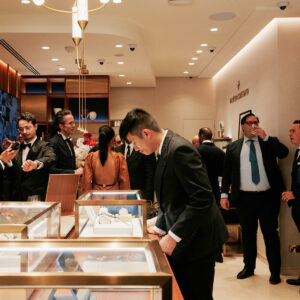The Cartier Santos is a legendary watch. Watch enthusiasts young and old clamour over this timepiece, but how did this come to be?
This article is written in collaboration with Cartier
You rarely hear about a debutante timepiece becoming an instant legend, if at all. Of course, you’ll get the occasional enterprising microbrand or independent that claims to be a part of the ‘next big thing’ to dramatise themselves and their ideals.
However, you must practice what you preach. From a smaller level, the implications are much less severe. But if you’re the French High Jewellery Maison, Cartier, when you say you’re going to knock it out of the park people are expecting you to do just that. Thankfully, they did just that with the Santos. Their premiere timepiece became one of the most recognisable watches in history, but how did this all begin?
The Origin
Cartier began in 1847 when, after years of learning from his master Adolphe Picard, Louis-François Cartier took over the Parisian workshop. However, it wasn’t until two generations later that the Cartier name would begin to be established worldwide, thanks to his three grandsons: Jacques-Théodule, Pierre Camille, and Louis Joseph. Of the three, Louis Joseph plays the most pivotal role in the invention of the Santos.
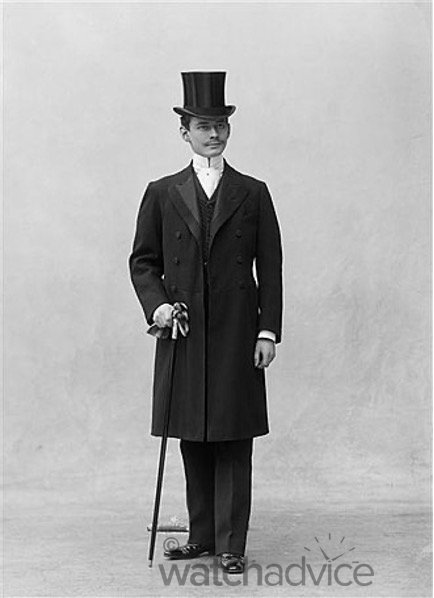
On the other side of the world, another important figure was gaining notoriety – one that seemingly had nothing in common with the then-fledgeling jewellery brand. Alberto Santos-Dumont, an aspiring engineer from Brazil, had been making steady detours to Europe in the years leading up to the turn of the 20th Century. By 18 years old, he had already climbed Mont Blanc, the highest mountain in the Alps. By 25, he set off on his first flight in Brésil, the world’s first spherical hydrogen balloon. This would inadvertently become a benchmark for several innovations in lighter-than-air flight in the years that would follow.
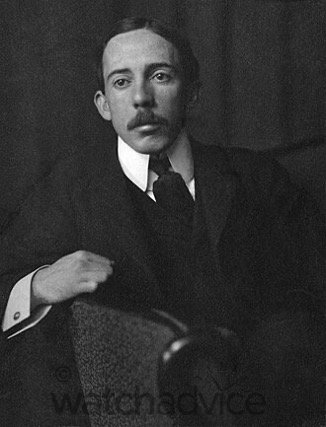
Alberto Santos-Dumont
The Brazilian aeronaut, engineer, and later friend of Louis-Joseph Cartier. He is the namesake for the Santos and Santos Dumont collections, and pivotal in the creation of these iconic timepieces.
It wasn’t until 1900 that the first meeting of the minds occurred between Louis Joseph, now a seasoned jeweller and novice watchmaker, and Alberto, now with an aeronautics reputation that rivaled the Wright Brothers. A year later, Alberto approached Louis, bemoaning the cumbersome nature of using his pocket watch while flying. He asked if Louis would be up to the task of creating a watch that could be used in flight, and Louis was more than happy to accept such a challenge.
Flight Of The Brésil
Alberto Santos-Dumont takes his first flight in Brésil, the first spherical hydrogen balloon. Despite initial concerns regarding tearing and resistance, he used Japanese silk for the envelope (the balloon part)
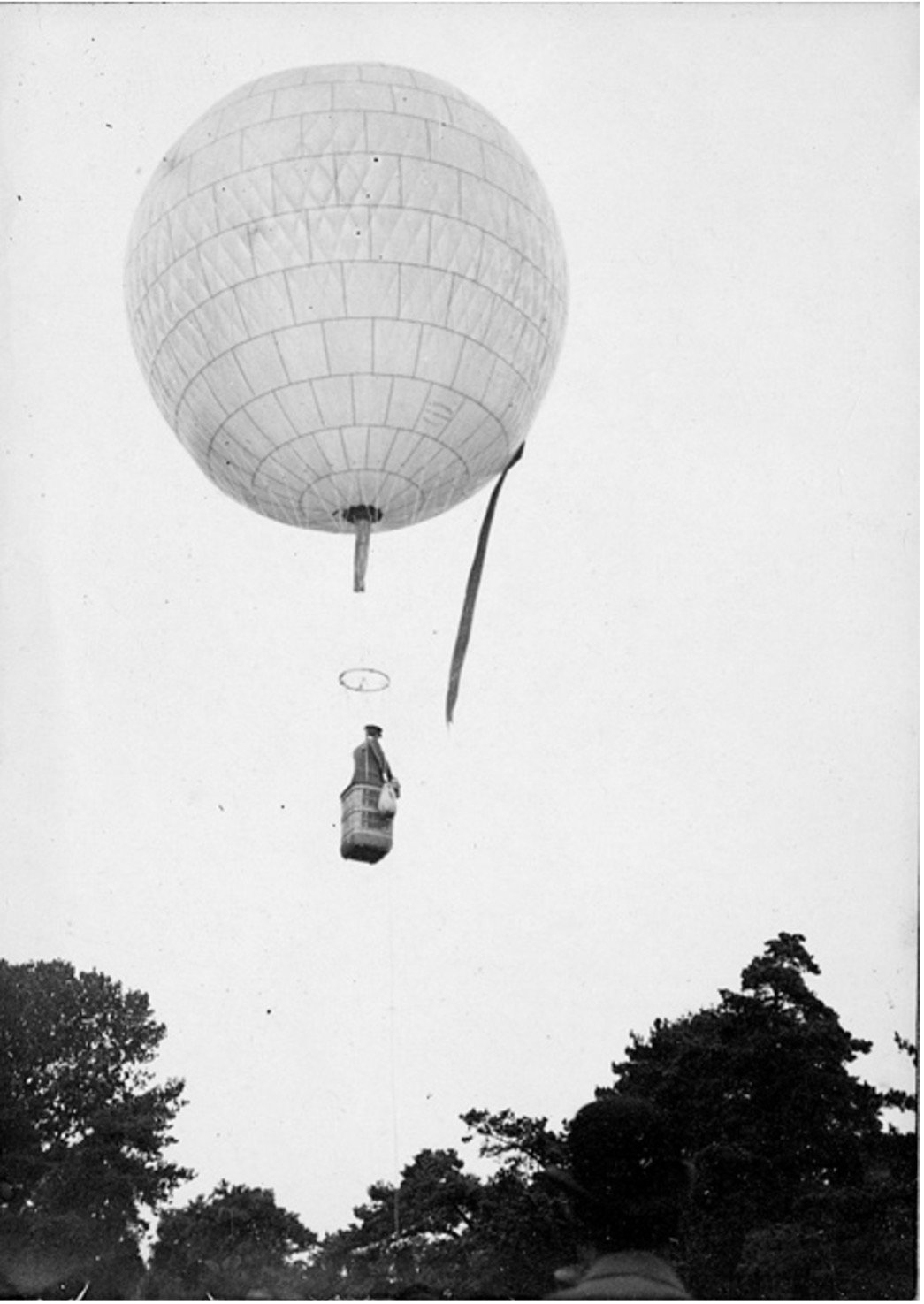
Three years later, it had been completed. Taking inspiration from wristwatches, Louis would mount a square-cased watch with exposed screws onto a strap for his friend to wear. This is what would eventually become not just the first iteration of the Cartier Santos, but also one of the first-ever wristwatches made for men, and the world’s first pilot’s watch. And Alberto Santos-Dumont? He would etch his name in aviation history with his Demoiselle No.19 in 1907, flying 200m, and then in 1909 with the Demoiselle No.20, would be more successful, becoming the worlds first true Ultralight aircraft – and a Cartier Santos on his wrist to accompany him.
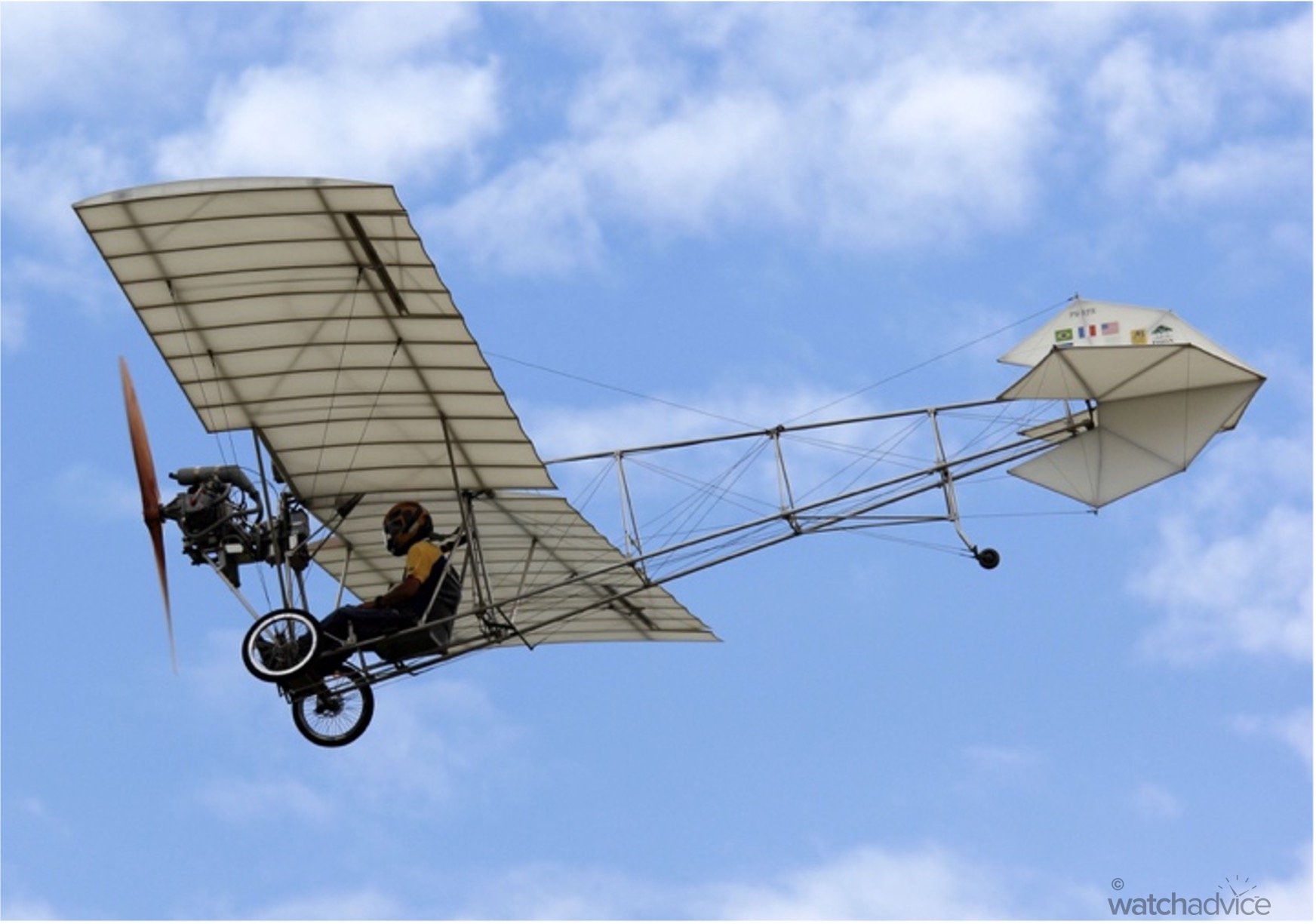
The Evolution
The Cartier Santos was ground-breaking for the time, as wristwatches were generally regarded as a more feminine accessory whilst pocket watches were meant for gentlemen. However, Alberto Santos Dumont’s wristwatch became a frequent appearance in photos taken of the man, and the popularity of his titular watch skyrocketed.
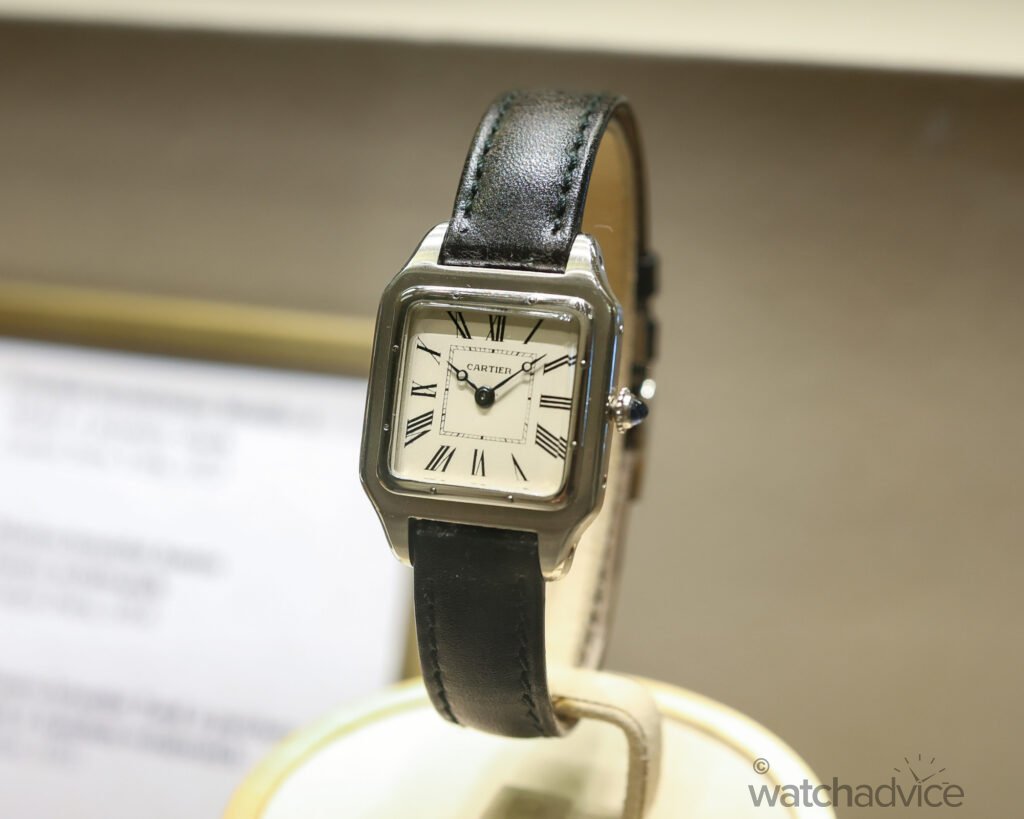
Despite their general awareness of critical acclaim, Cartier didn’t release this model for standard production until 1911. Initially named ‘Santos-Dumont,’ the name was eventually shortened to just ‘Santos’ and would continue to gain interest throughout the early to mid-twentieth century, plateauing only due to the First and Second World Wars. Even then, the Parisian Cartier Maison remained open, producing high-quality jewelry and timepieces despite a lack of materials on both occasions.
One of the biggest periods of change for the Cartier Santos was throughout the 70s through to the 90s. The advent of the Quartz Crisis brought about a newfound drive for artistic and technical innovations in the seemingly dying mechanical watch trade, which required a significant shift in vision, which thankfully, Cartier had.

Under the presiding leadership, Cartier released the Santos de Cartier, a predominantly steel rendition of the original Santos in a bid to appeal to a younger crowd at an accessible price point. Steel was not a material Cartier was that familiar with, so to maintain their luxurious reputation they coupled it with gold accents, making the Santos de Cartier the first-ever two-tone wristwatch. The two-tone design would become a staple of this watchmaking era, and the Santos de Cartier two-tone still persists in a modern rendition.
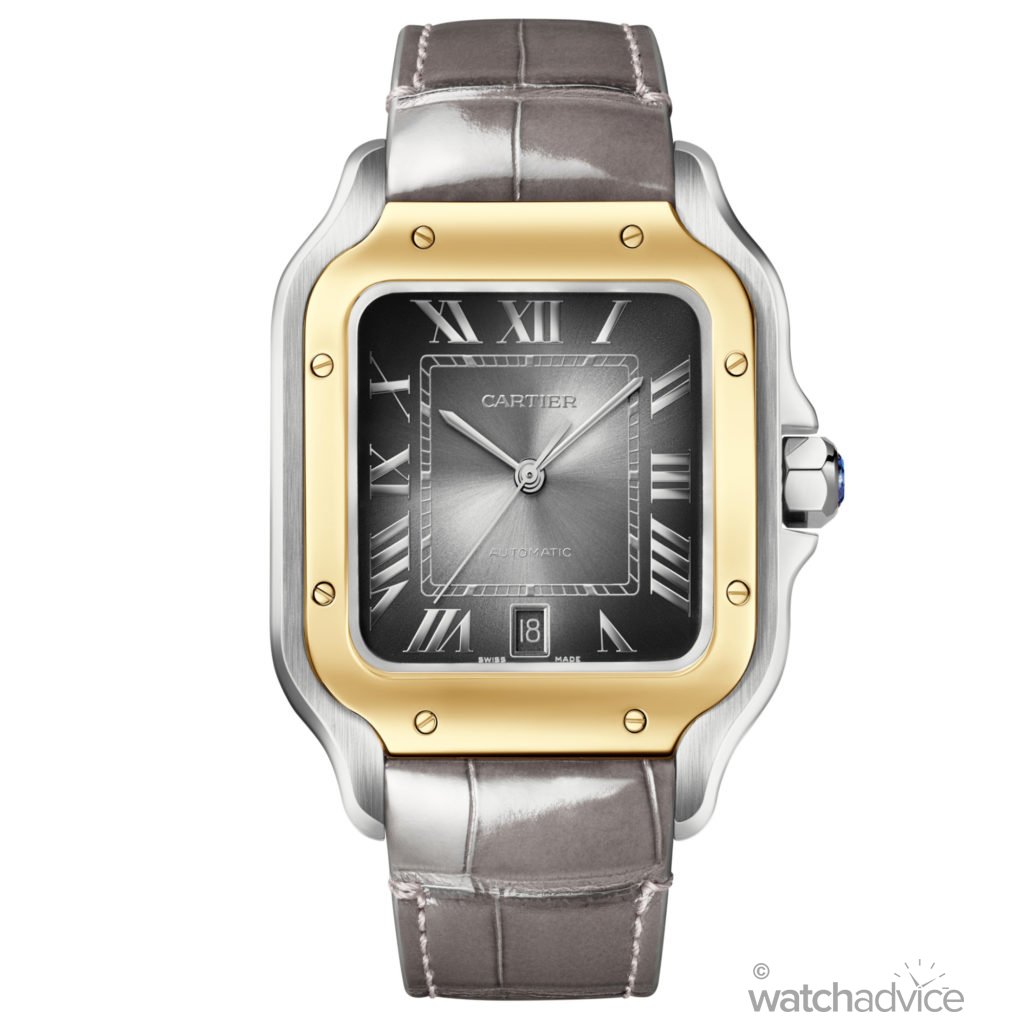
The modern grey dial, two-tone Santos de Cartier released at Watches & Wonders 2024.
This model is a tribute to the original’s aesthetic, which you can see come through in both the design elements of the case and dial.
A relaunch of the Santos in 1987 would also bring about another popular Santos collection, the Santos Galbée. A quartz watch with a design aimed at those who wanted a more subtle and softer-looking piece, the Santos began to lose some of its boxy silhouettes in favour of a slightly more curved design. While the Galbée has long since been discontinued, it was an important step in the Santos’ transformation, as those curvier design features have made their way into the modern Santos design.
The Santos Galbée
Where the curvier design features have made their way into the modern Santos design when you compare it to the image of the 2024 two-tone above, it’s easy to see the design philosophy almost 40 years later.
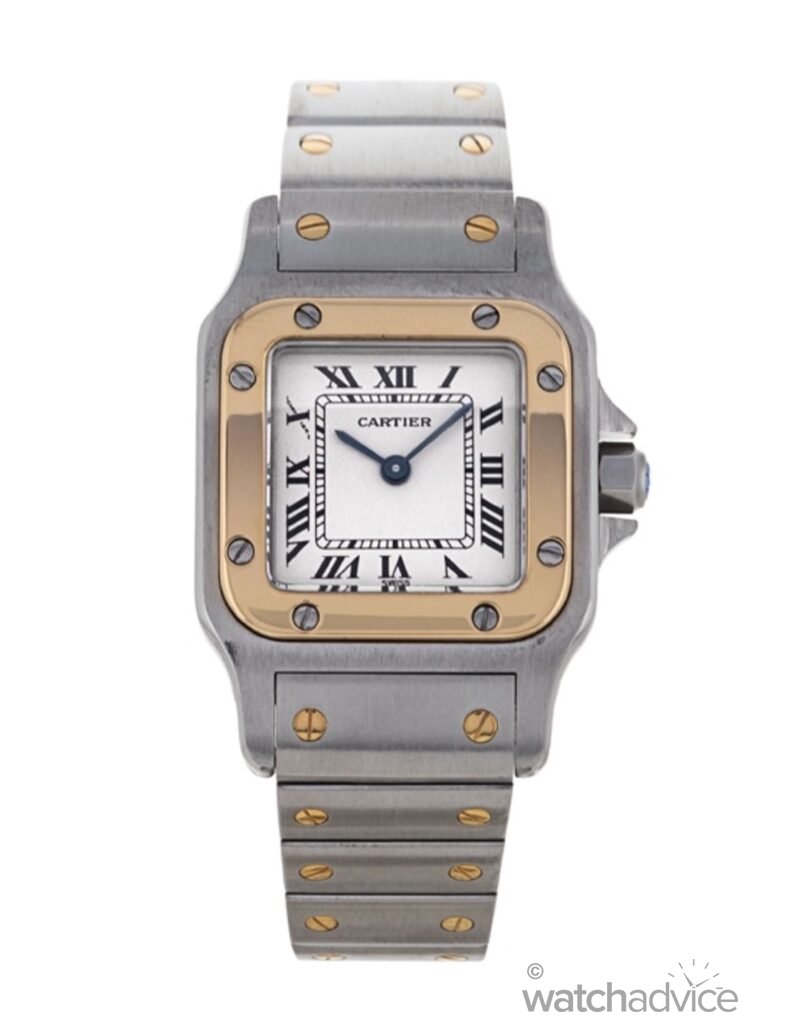
2004 saw the return of the Santos’ original boxy frame with the Santos 100, made to celebrate the 100th anniversary of the first reference made for Santos-Dumont. However, as Cartier got into the mid-late 2000s, the Santos lay dormant for almost a decade. It wasn’t until 2018 that we saw the return of the Santos lineup – now officially named Santos De Cartier, and coming back in full force with thirteen new references. The remastered Santos-Dumont, a dressier alternative to the Santos De Cartier, also followed in 2019.
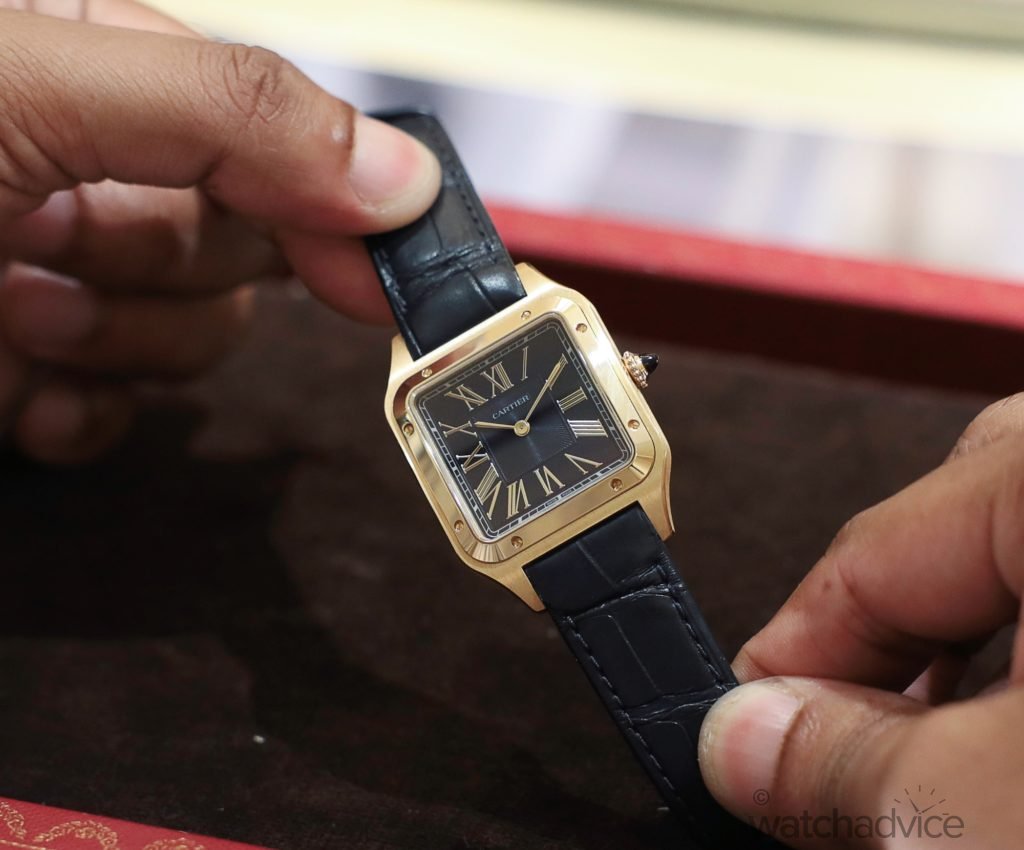
The Present & Future

Since their grand returns in 2018 and 2019, the Santos de Cartier and Santos-Dumont collections enjoyed attention from A-listers down to the aspiring enthusiast. Its modern silhouette and aesthetic are unmistakably Cartier, guided both by the Maison’s love for Art Deco and Santos-Dumont’s daring nature.

This dichotomous design language has provided the watch with a timeless sense of versatility. This may explain why this model is one of the Maison’s bestselling pieces in Australia today, alongside collections such as the Pasha and Tank MC.
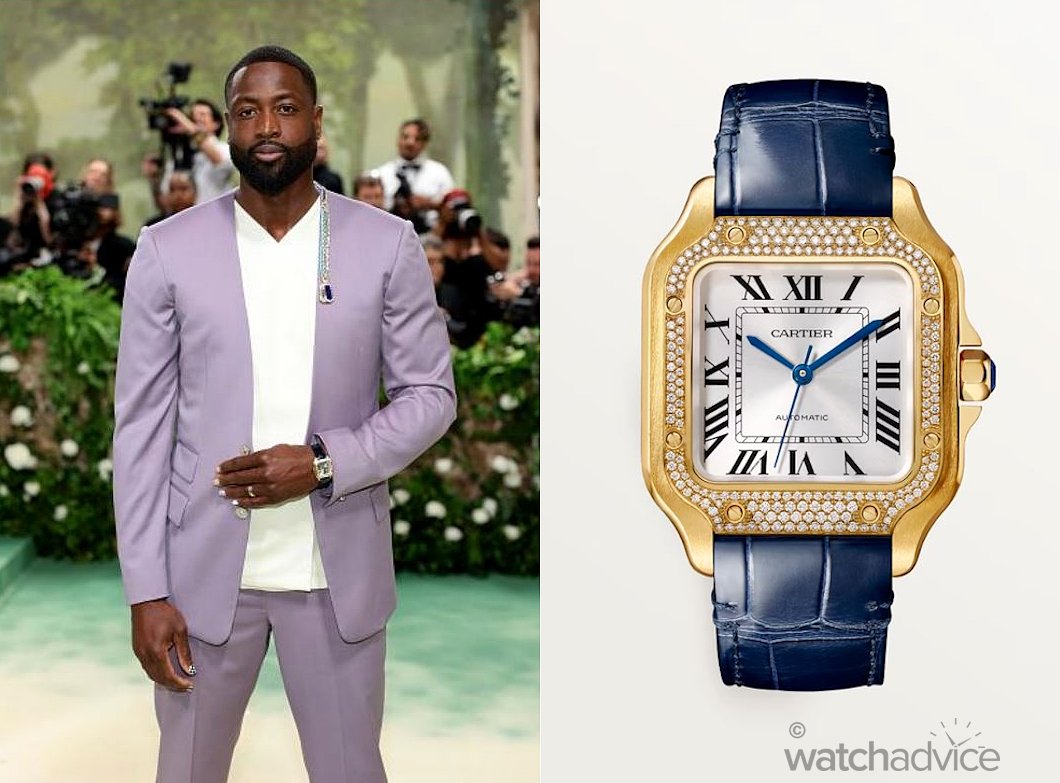
The legacy of the Santos has persisted even as far as today. In 2024, we were able to experience both the Santos De Cartier Dual Time and the spectacular Santos-Dumont Rewind, which you can see Watch Advice Founder, Chamath Gamage sporting the newly released, limited edition piece at Watches & Wonders this year.
Last year bore witness to what was, in my opinion, the best Santos yet: The Santos-Dumont Skeleton, complete with a micro-rotor in the shape of Alberto Santos-Dumont’s plane, the Demoiselle. The intricacy and skeleonisation are amazing, and in person looks better than any photo can do justice!
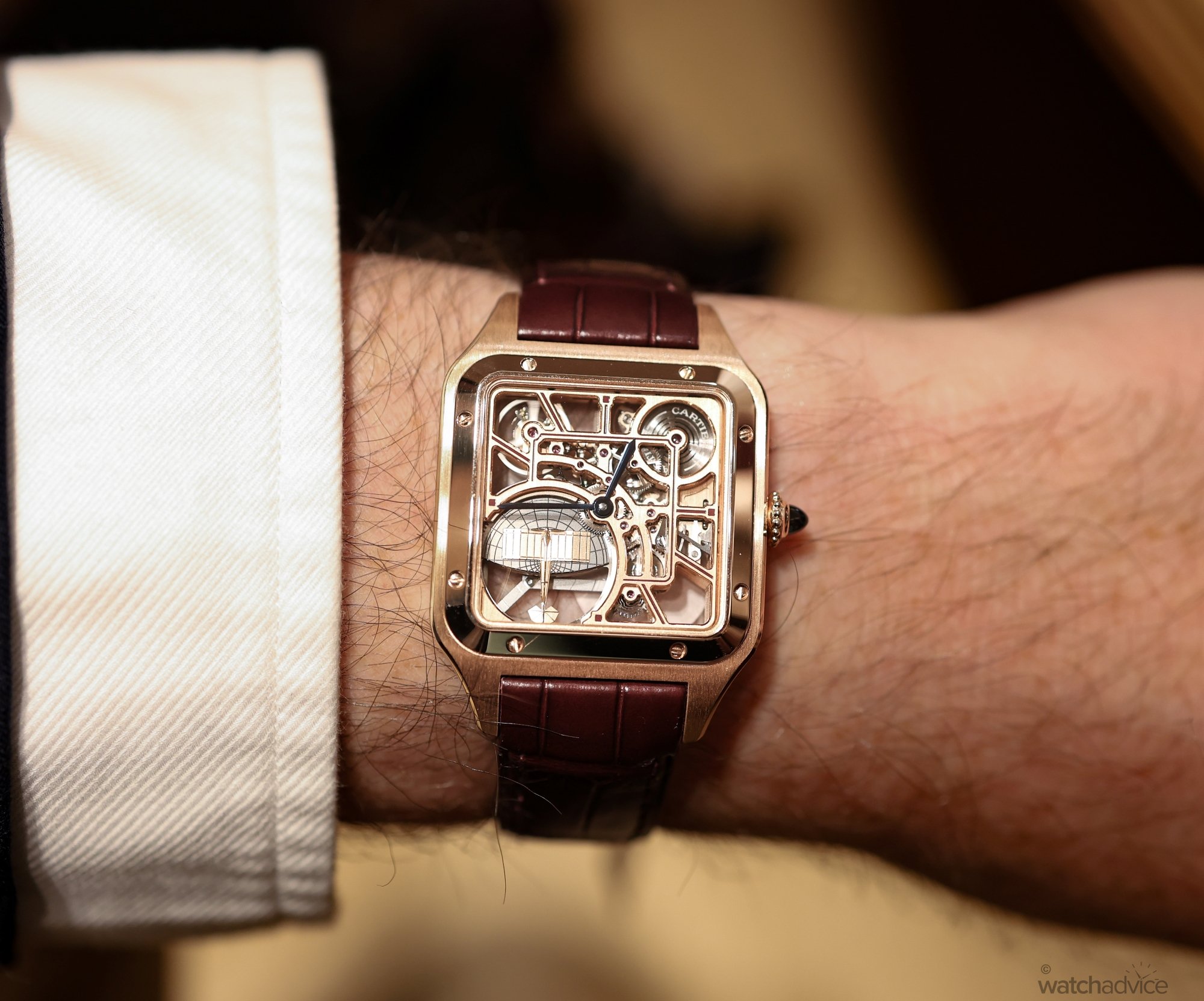
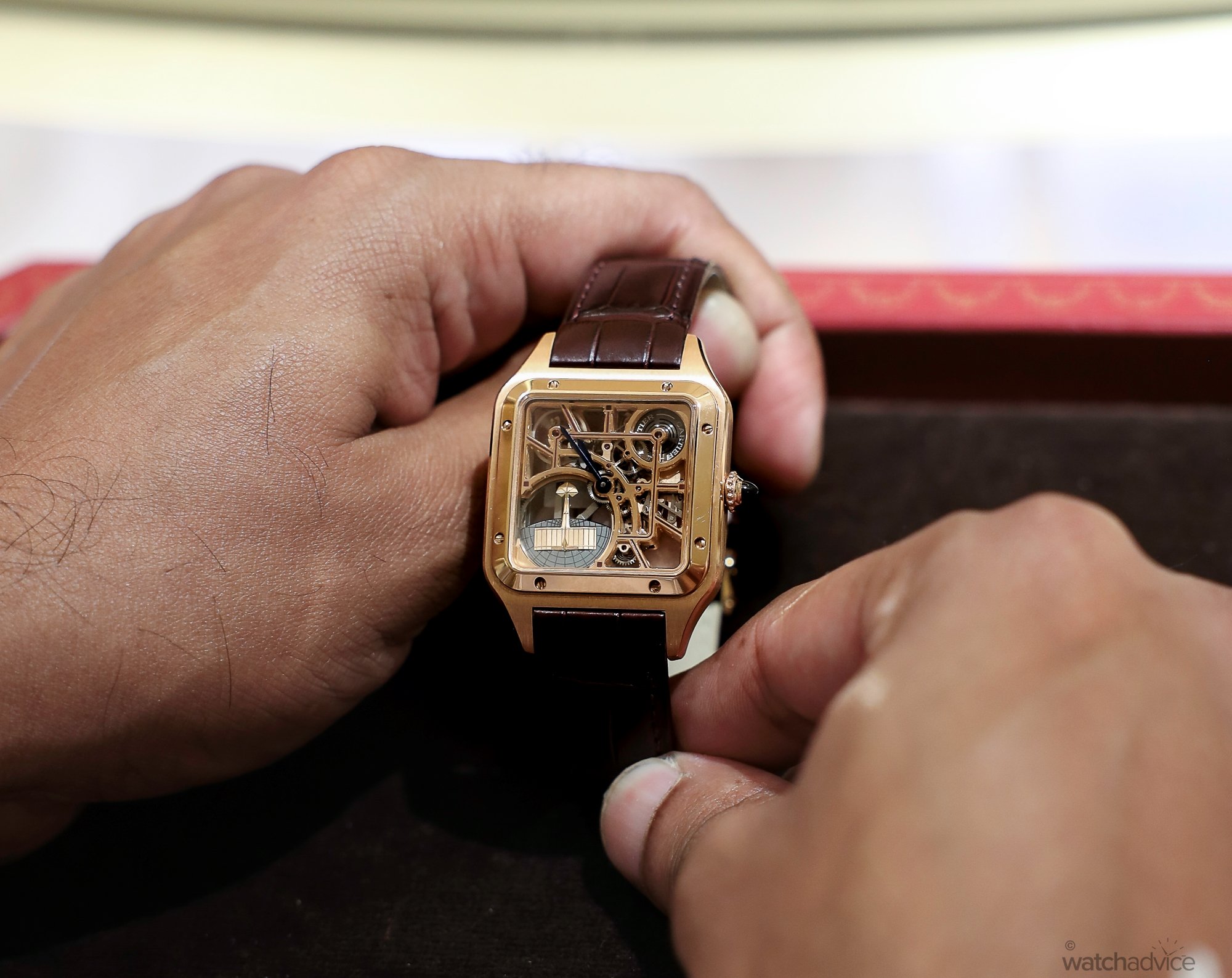
As for what the future holds, the Santos’ story looks promising. The Santos’ hundred-year-long resume has made it privy to practically every watch-related scenario. The first ever wristwatch, the first ever pilot’s watch, the first two-tone watch – the Santos has been there, done that. It’s a tried-and-true design that has been left almost entirely unchanged – An anachronistic accessory in a modern world rife with rapidly changing trends. While the Santos stays true to its design heritage, there’s still plenty of freedom for Cartier to experiment – look at the skeletonised Santos de Cartier below with the 12, 3, 6, and 9 in skeletonised Roman Numerals providing the frame for the dial!
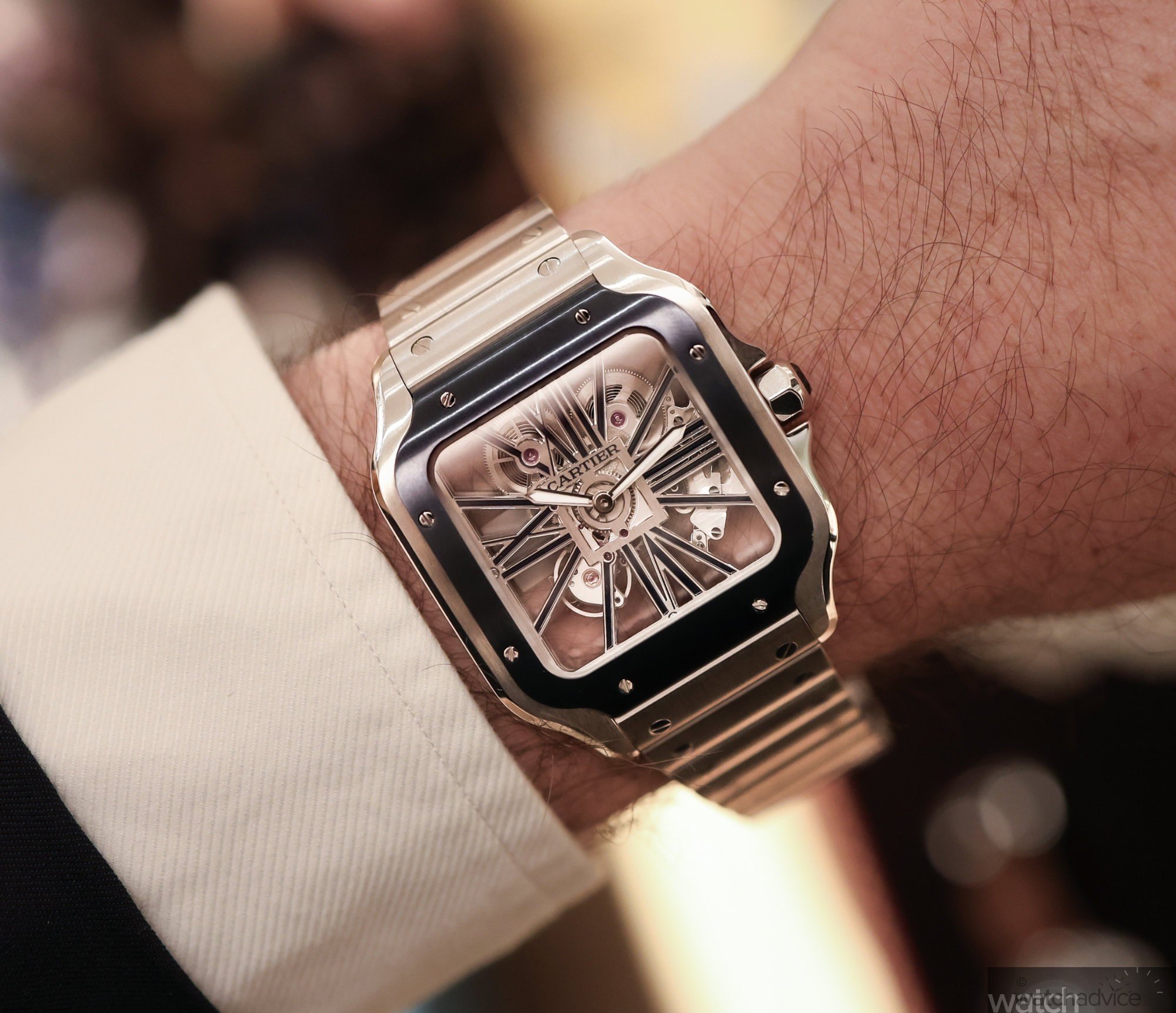
That being said, the Cartier Santos’ ability to navigate over a century’s worth of watchmaking history only proves that it has the grace and drive to be able to navigate at least a hundred more. Combining the Santos’ heritage, iconic design, and Cartier’s drive for artistic and technical innovation, how could it not remain a staple of horology? As trends evolve, tastes change, and new timepieces are released almost every day, the Santos remains stalwart, a symbol of Cartier’s legacy and their contribution to the definition of modern watch culture.
This article was written as part of a commercial partnership with Cartier. Watch Advice has commercial partners that work with us, however, we will never alter our editorial opinion on these pieces, a fact that is clearly communicated to the brands when entering into a commercial arrangement.



